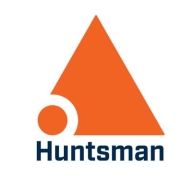

Enterprise SIEM and Huntress Managed SIEM compete in the cybersecurity niche. Enterprise SIEM holds an edge in feature capabilities, while Huntress Managed SIEM offers cost-effectiveness.
Features: Enterprise SIEM emphasizes robust threat detection, real-time analytics, and advanced automation. It also offers extensive scalability options. Huntress Managed SIEM focuses on streamlined reporting, user-friendly integration, and immediate deployment without the need for customization.
Ease of Deployment and Customer Service: Huntress Managed SIEM ensures quick deployment with straightforward implementation and responsive support. Enterprise SIEM, with its complex architecture, requires more setup time but provides extensive support options. Huntress Managed SIEM is more suitable for quick deployment, particularly for small to medium-sized businesses.
Pricing and ROI: Enterprise SIEM involves higher initial costs and a longer ROI period, justified by its extensive features and scalability for large enterprises. Huntress Managed SIEM has lower setup costs with faster ROI, making it an economical option for budget-conscious organizations. While Huntress Managed SIEM presents excellent immediate value, Enterprise SIEM offers benefits over a longer period for growing businesses.

Enterprise SIEM aids in threat detection and security information management, enabling quick mitigation of security incidents while improving overall security.
Enterprise SIEM is critical for monitoring network activities, correlating data across multiple sources to uncover potential threats, and ensuring compliance with industry regulations. It automates security workflows and delivers detailed insights into security operations, enhancing the ability to identify and respond to security incidents promptly. While featuring automated threat detection and real-time monitoring, Enterprise SIEM also boasts robust scalability and extensive integration capabilities. Common challenges include scalability during peak times, deployment complexities, and limitations in configuration and customization. Improved support and documentation could further enhance its usability.
What are the key features of Enterprise SIEM?Enterprise SIEM is implemented across diverse industries to monitor network activities, ensure compliance, and maintain robust security. For instance, financial institutions deploy it to safeguard sensitive data and prevent fraud, while healthcare sectors use it for HIPAA compliance and to protect patient information. Additionally, government agencies rely on Enterprise SIEM for national security and sensitive information protection, ensuring that their security infrastructure is both resilient and compliant with regulatory standards.
Huntress Managed SIEM offers a robust platform for security monitoring, empowering businesses to effectively manage threats and streamline processes in a dynamic digital landscape.
This managed solution focuses on delivering advanced threat detection and response capabilities to combat cybersecurity challenges. It integrates seamlessly with existing infrastructures, providing comprehensive visibility and control. Users can leverage its intuitive interface for enhanced threat analysis and quick resolution of security incidents. Huntress Managed SIEM is designed to cater to the needs of enterprises looking for scalable security solutions that adapt to evolving threats.
What are the most important features of Huntress Managed SIEM?In industries like finance and healthcare, where data protection is crucial, implementing Huntress Managed SIEM enhances compliance and boosts security. It helps businesses mitigate industry-specific threats through tailored monitoring and reporting, ensuring that sensitive data remains protected against breaches.
We monitor all Security Information and Event Management (SIEM) reviews to prevent fraudulent reviews and keep review quality high. We do not post reviews by company employees or direct competitors. We validate each review for authenticity via cross-reference with LinkedIn, and personal follow-up with the reviewer when necessary.